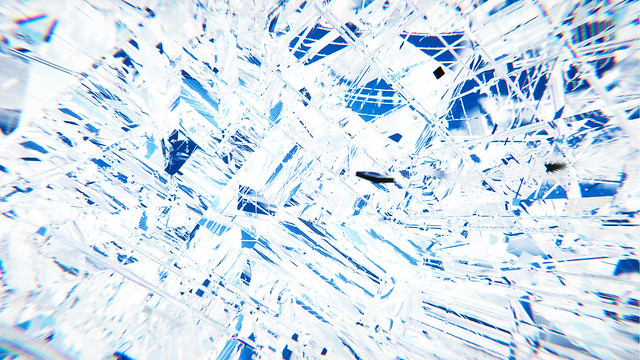Crystal Palace (2020). A live simulation of AI agents navigating a convoluted glass structure — Crystal Palace invokes a historical structure of invention and industry, trapping both nascent AI agents and spectators in a game of interreflection, an interactive looking glass.
The agents use an implementation of the Soft Actor-Critic reinforcement learning technique. Reward is given for successfully approaching and adhering to a surface that could offer a reflection as the glass surface rotates at random. The single-channel video installation, viewed through a mirror, is an interactive experience in which the glass structure can be rotated, creating cascading effects on the agents. The camera cuts between the point of view of the AI caught in frenetic self-observation and a wide interior shot of the edifice.
The piece makes direct reference to the construction of the glass and metal palace that housed the Great Exhibition of 1851, a landmark world fair of invention, implicating the recent developments of artificial intelligence within the historical perspective of the advances of science in the mid 19th and early 20th centuries. The play of reflection between agent, spectator, and structure creates a confusing spectacle of self-reflection, a fraught environment between human and non-human participants.


